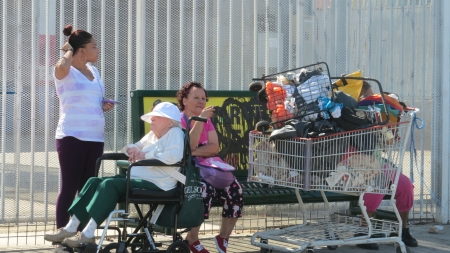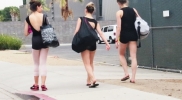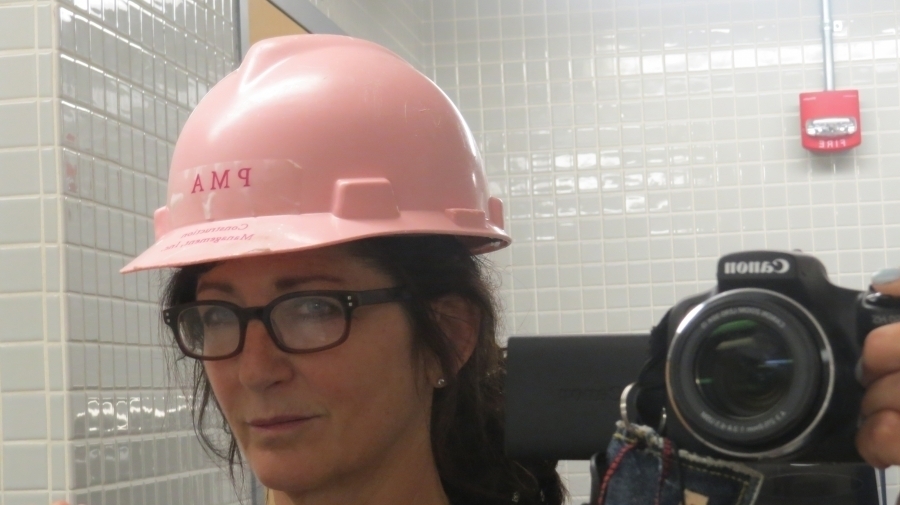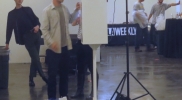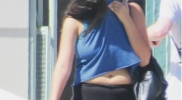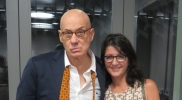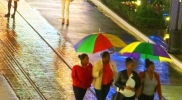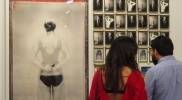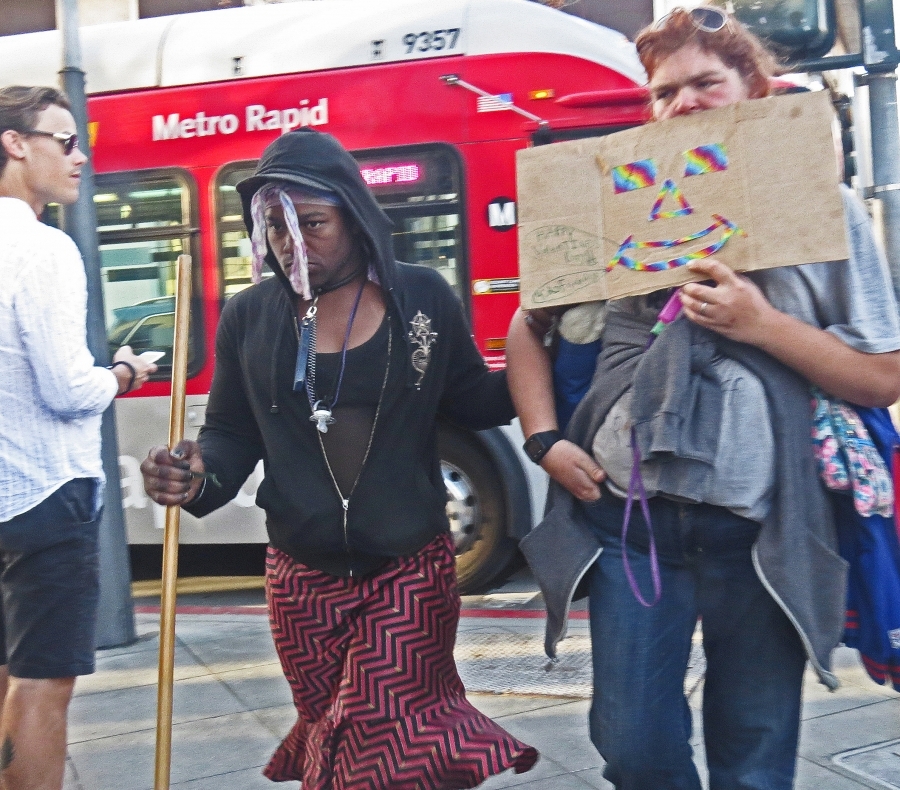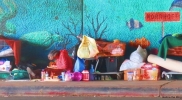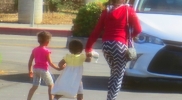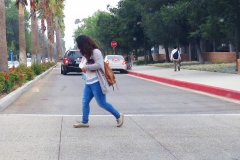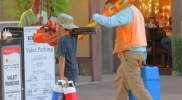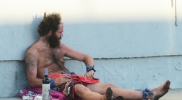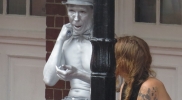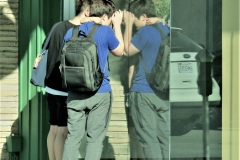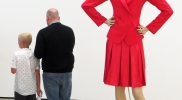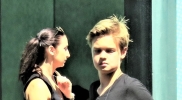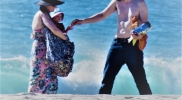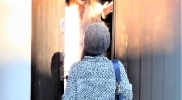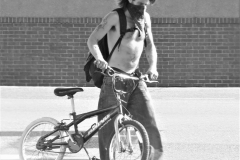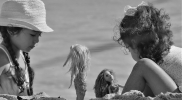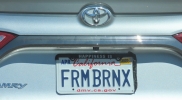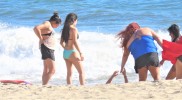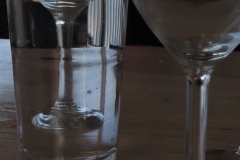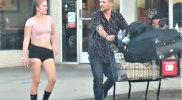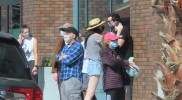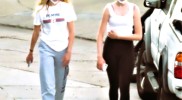|
|
Best Trivia - Attire
|
Favorite Trivia – ATTIRE & HAIR & MAKEUP
|
| “Wear: Modern girls wear less on the street than their grandmothers did in bed.”
Evan Esar – Esar’s Comic Dictionary
|
| “Tight Shoes: If you want to forget all your troubles, wear tight shoes.”
Evan Esar – Esar’s Comic Dictionary
|
| “A bikini is like a barbed-wire fence. It protects the property without disturbing the view.”
Joey Adams
|
 |
| “Society Note: The most lavishly dressed woman at the reception was Miss Agnes S. Smith, who wore a lovely black velvet dress cut so low in the back that you could see her initials.”
Still More Oversexteen, Vol. 3
|
| “We don’t get out of bed for less than $10,000 a day.”
Linda Evangelista regarding her fellow supermodels
|
|
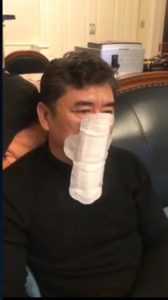
Masks – Covid-19
|
| “Show: The girl who wears clothes that show everything should be sure she has something worth showing.”
Evan Esar – Esar’s Comic Dictionary
|
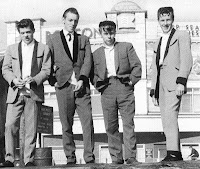
“Against the backdrop of post-war gloom in the 1950’s, the Teddy boys emerged… the concept of the ‘teenager’ was born, and so too was this indefatigable working-class youth culture, partly adopting and adapting the sartorial signature of Edwardian dandies (and shortening the name to ‘Teds’). First among its features were the three-quarter-length drape jackets, in dark shades and often made of velvet and cut with trim collars and pocket flaps. They were accompanied by high-waisted drainpipe trousers, often reveling the socks, accessorised with a skinny tie held together with a medallion—cross-bones, skulls, eagles, dollar signs and other American iconography—and the outfit completed with either winklepickers or crêpe-soled shoes usually made from suede, known as brothel creepers or beetle crushers, as the footwear of choice.”
Tim Clark – Another Kind of Life: Photography on the Margins – ed. by Alona Pardo
|
|
“Two small children find a hole in the fence by a nudist camp. One peers in through the hole.
The other asks, ‘Are they men or ladies in there?’
‘I can’t tell,’ says the first. ‘None of them have got any clothes on.'”
|
| fashion: “What a her does to a hem to get a him.” – Changing Times
Leonard Louis Levinson – Webster’s Unafraid Dictionary: Defiant Definitive Put-Downs
|
|
British hairstylist Raymond Bessone, was the first celebrity hair stylist (1930’s-1960’s), whose skill with shears earned him the moniker, Mr. Teasie Weasie.
|
| “Emily’s waist on rising in morning is 25 inches. When in corset, 22 1/2 inches.” [January 19, 1882]
Dearman Birchall – Diary of a Victorian Squire
|
| “I hear of nothing but balls and high heads—so enormous that nobody can sit upright in their coaches.” [Mrs. Delany in a December 1775 letter to Mary Port]
Molly Peacock – The Paper Garden: Mrs. Delany [Begins Her Life’s Work] at 72
|
| “Bigger isn’t better if it doesn’t fit.”
Patty Martino Alspaugh
|
| “The custom of darkening the eyelids is world-wide. Hindu women smear black pigment on their eyelids as a protection against the evil eye. Today girls use this magic in reverse: as an attracter to not a warder off. It seems to work one way as well as the other . . . Egyptian women enhanced the power of their eyes with pigments; the custom was to paint the upper lids blue and the lower lids green.”
Maria Leach – The Soup Stone: The Magic of Familiar Things
|
|

“For centuries, there was no such thing as a brassiere, only the corset (a woman’s underpinnings were known as corsetry). Made of whalebone, the corset confined the breasts and the waist in an excruciatingly painful manner. ‘Corsets caused a plethora of health problems, ranging from deformed rib cages to damaged reproductive organs. Women knew the dangers of wearing corsets, yet proper ladies had little choice but to wear one.’
“The first brassiere was invented in 1914 by Mary Phelps Jacob, a.k.a., Caresse Crosby, who sold the patent to Warner’s Corset Company for $1,500. The bra, known as the Kestos, was made of two handkerchiefs with elastic around the back that buttoned under each cup. You could adjust it depending on your cup size.
“Six years later after winning the right to vote, women not only abandoned the corset—which emphasized a woman’s curves—they dressed to eliminate all curves with bras that laced up on the side to flatten out the chest, creating the flapper look of ‘cropped do’s and flat chests.’
“In the 30’s this changed with the invention of padding and wiring, providing women with the curves they again sought. An alphabetical classification of the size of the bosom was also introduced (A, B, C, D—or as they were known in the manufacturing world, eggcup, teacup, coffee cup, and challenge cup).
“In the 60’s, doctors warned about not wearing a bra. ‘Going braless would stretch breast ligaments. Something doctors called Coopers Droop (after British Doctor Sir Astley Cooper, who drew attention to the condition).”
Cheree Berry – Hoorah for the Bra
|
“Said an envious, erudite ermine
‘There’s one thing I cannot determine:
When a dame wears my coat,
She’s a person of note;
When I wear it, I’m called only vermin!'”
Leonard Louis Levinson – Webster’s Unafraid Dictionary: Defiant Definitive Put-Downs
|
| “After a glorious day at the N. end of the Island with the Puffins, was forced tonight to take another walk, as the smell of Albert’s tobacco, together with that of his stockinged feet and his boots removed, was asphyxiating.” [June 7, 1909]
W.N.P. Barbellion – The Journal of a Disappointed Man
|
| How to dress for a crucial business meeting:
“02: Wake up an hour earlier than usual. This will give you time to consider the weather and plan your outfit, hair, and makeup accordingly; 08: Always wear some sort of heel, because it gives you better posture Don’t wear platforms—it doesn’t look professional. Never wear a pair of shoes that you haven’t broken in. You will end up in pain, which will disrupt the flow of blood to your brain; 12: Always take an SUV to the meeting—it’s better for your self-esteem to be higher than the other cars on the road.”
Last-minute getting-ready survival guide:
“01: Make sure you know what you’re wearing in advance, and that it’s stain and wrinkle free; 06: Don’t even think about squeezing any blemishes before you go out unless you want your face to look like a crime scene; 11: And finally, do not make a mistake with your underwear choice when wearing a sheer dress… try taking a selfie with a bright flash while facing the mirror.”
Overpackers tips:
“01: If you haven’t worn it at some point in the last year, it does not belong in your suitcase; 09: Take care with delicate items—don’t assume that the layers and layers of clothing you have stuffed around them will insulate a breakable or potentially messy item properly. I once packed a huge snow globe without wrapping it and opened my bag on the other end to find it filled with glass, glitter, and water; 10: Of course, the only time you edit out that evening gown you always include but never wear will be the one trip during which you are invited to a very dressy event. It’s the law of packing nature. Consider it an opportunity to buy something new out of necessity. Silver lining!”
Giovanna Battaglia – GIO_GRAPHY: Fun in the Wild World of Fashion
|
| hair: “The current status symbol, long for boys, short for girls, any for older men.”
Leonard Louis Levinson – Webster’s Unafraid Dictionary: Defiant Definitive Put-Downs
|
| “Reggae star Bob Marley is probably the best-known wearer of dreadlocks. He grew them as part of his Rastafarian beliefs. Dreadlocks were popularized by the Jamaican leader of the ‘Youth Black Faith’ movement, Bongo Watto, in 1949. Some say the name comes from ‘dreadful lock’, meaning either the wearer looked dreadful or was to be dreaded. Some wearers consider their dreadlocks sacred, others a source of strength, or a symbolic sign of rebellion against oppression.”
Laurent Philippon – Hair: Fashion and Fantasy
|
| fall: “The season when your wife buys new winter clothes so she’ll have something to wear when she goes shopping for spring outfits.” – Harold Coffin
Leonard Louis Levinson – Webster’s Unafraid Dictionary: Defiant Definitive Put-Downs
|
| “A woman walks into a clothes shop and says, ‘Could I try on that dress in the window?’
‘You can if you want,’ says the sales assistant, ‘but customers usually prefer the changing room.'” |
| “In 1254 St Louis King of France ordained that prostitutes should dye their hair red to distinguish them from respectable women.”
Laurent Philippon – Hair: Fashion and Fantasy
|
|

“The Chignon is a way of drawing the hair up, revealing the back of the neck. The simplest form of chignon is the ponytail; the most complex chignons are intricate wonders that show off the hairdresser’s ingenuity and give the wearer a sense of enormous well-being.”
Laurent Philippon – Hair: Fashion and Fantasy
|
|
“Being around Bill [Cunningham] I learned that not only is it better to be overdressed than underdressed, but also that putting on something wonderfully decadent will lift your mood and therefore the moods of everyone around you. And also that fashion can and should always be a tool for creating a wonderful moment, rather than a burden. Have fun, take a chance, and always maintain a sense of play.”
Giovanna Battaglia – GIO_GRAPHY: Fun in the Wild World of Fashion
|
| “Léonard Autié was Marie Antoinette’s personal hairdresser. In her honour he created architectural wonders out of hair decorated with feathers, flowers, pearls and other jewelry… The fashion for extravagant hair ended with the French Revolution of 1789, when many of his customers (including the Princesse de Lamballe) lost their heads to the guillotine. Léonard survived to write his memoirs.”
Laurent Philippon – Hair: Fashion and Fantasy
|
| “Geishas are women whose traditional role is to entertain wealthy clients. They must master poetry, music and dance. A geisha’s appearance follows very strict aesthetic codes. They wear a kimono and arrange their hair in a bun in a style called ‘shimada.’ Today, so few hairdressers can make a genuine shimada that the style is commonly worn as a wig… The shape of the shimada differs depending on the maturity of the wearer. Some find the curvaceous shapes of the shimada suggest the curves of the female body.”
Laurent Philippon – Hair: Fashion and Fantasy
|
| “Swanson was never putty in the hands of fashion or costume designers…’I knew every centimeter of my body,’ she said. She had learned along the way that if she lengthened her skirts in the back and dropped the waistline in the back, she looked taller. She also knew that uneven lines gave her height, so she often wore one cuff of a jacket trimmed with fur. When she wore a long gown with only one sleeve, millions of women rushed to their closets with scissors. To minimize her broad shoulders she had things cut on the bias. Though she was diminutive, she favored oversize accessories. She wore turbans, cloches, and peaked hats that would draw attention away from her large head. ‘She thought she had a short neck, so she wore a lot of V-necks or off-the-shoulder styles,’ says her daughter, Gloria Daly.”
Annette Tapert – The Power of Glamour
|
“Babies haven’t any hair;
Old men’s heads are just as bare;—
Between the cradle and the grave
Lies a haircut and a shave.”
Samuel Hoffenstein
|
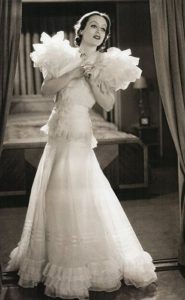
“The seminal event in the Crawford-Adrian partnership occurred in 1932, when he designed the starched white chiffon dress with gigantic puffed and ruffled sleeves that she wore in Letty Lyton, still heralded by costume designers and fashion historians as the ‘single most important influence on fashion in cinema history.’ Macy’s quickly sold 500,000 copies of this frock in its Cinema Shop.”
Annette Tapert – The Power of Glamour
|
| “A full head of hair consists of about 100,000 strands, not counting a beard or a mustache.”
Leonard S. Marcus (The Annotated Phantom Tollbooth by Norton Juster)
|
| “She [Joan Crawford] continued to match her dress to her shoes and later extended this habit to her gloves, hat, and handbag. ‘The one deadly mistake is to select accessories that almost match,’ she advised. ‘Nothing kills an outfit quicker.’ In this area she left nothing to chance—shoes and handbags were always made of the actual fabric and then plastic-laminated.”
Annette Tapert – The Power of Glamour
|
|

“The country’s best-dressed woman of 1936 [Kay Francis] hated to shop. She also hated going to the hairdresser; at one point she bought a wig which she nicknamed ‘Miss Merkin’ in honor of the pubic wigs used by prostitutes in medieval times.”
[The Oxford Companion to the Body dates the origin of the pubic wig to the 1450s. According to the publication, women would shave their pubic hair for personal hygiene and to combat pubic lice. They would then don a merkin. Also, sex workers would wear a merkin to cover up signs of disease, such as syphilis.]
Annette Tapert – The Power of Glamour
|
| “The duchess’s [of Windsor] approach to her marriage was always to make the duke feel that he was still the king. ‘My husband gave up everything for me,’ she told Elsa Maxwell. ‘I’m not a beautiful woman. I’m nothing to look at, so the only thing I can do is dress better than anyone else. If everyone looks at me when I enter a room, my husband can feel proud of me. That’s my chief responsibility.’
“‘She had no personal life of any kind,’ confirmed Johnny de Faucigny-Lucinge. ‘She was like Scheherazade, she constantly had to keep the duke busy… I noticed a typed-out itinerary of his daily schedule that consisted of rather ordinary and mundane things. As the heir to the throne, he had been brought up to live by schedules. Wallis had one typed out every day to give him a sense of purpose.'”
Annette Tapert and Diana Edkins – The Power of Style
|
| four-piece dress: “If you remove the bodice, you have a playsuit. If you remove the skirt, you have a sunsuit. If you remove anything else, you have a lawsuit. – Anonymous salesgirl
Leonard Louis Levinson – Webster’s Unafraid Dictionary: Defiant Definitive Put-Downs
|
|
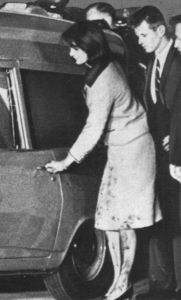
“The swearing in of Lyndon Johnson on the president’s plane on that runway in Dallas: The woman [Jacqueline Kennedy] who had entered the White House as the youngest first lady [31], left it in the grandest tradition of all tragic heroines—standing beside the new president, wearing a dress stained with her husband’s blood. She wore it all the way back to Washington. And she was still wearing it when she returned to the White House long after midnight, ‘I want them to see what they have done to Jack,’ Jackie later explained to the press.”
Annette Tapert and Diana Edkins – The Power of Style
|
| “. . . The Duchess of Windsor held sales of her old clothes in Suite 28-A of the Waldorf Astoria. A bargain-hunter would not necessarily find a Balenciaga or Chanel among her castoffs. ‘Balenciaga is such a trying man,’ the Duchess complained. ‘He makes one pull everything on over the head. It is ruinous to the hair.’ She in fact directed Balenciaga’s fitter to make whatever dresses she bought there ‘look more like Mainbocher.’ And Chanel was just ‘too much’. A chain here, a ruffle there.'”
The International Best-Dressed List – Amy Fine Collins
|
| “One should either be a work of art, or wear a work of art.”
Oscar Wilde
|
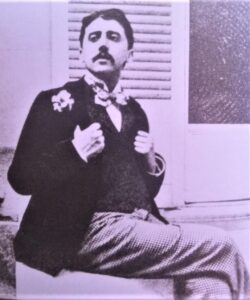
“Born in 1871 in Auteuil, a district of Paris, Proust was a belle epoque dandy who wore beautifully laundered white gloves and a cattleya orchid boutonniere, an extravagance purchased daily from the expensive Parisian florist LaChaume on Rue Royale.
Terry Newman – Legendary Authors and the Clothes They Wore
|
|

“Sometime during Barack’s campaign, people had begun paying attention to my clothes . . . When I wore flats instead of heels, it got reported in the news. My pearls, my belts, my cardigans, my off-the-rack dresses from J. Crew, my apparently brave choice of white for an inaugural gown—all seemed to trigger a slew of opinions and instant feedback. I wore a sleeveless aubergine dress to Barack’s address to the joint session of Congress and a sleeveless back sheath dress for my official White House photo, and suddenly my arms were making headlines . . . It seemed that my clothes mattered more to people than anything I had to say . . .
“Optics governed more or less everything in the political world, and I factored this into every outfit . . . it required careful research by Meredith [Koop], particularly on foreign trips. She’d often spend hours making sure the designers, colors, and styles we chose paid proper respect to the people and countries we visited . . .
“We were careful, Meredith and I, to always be prepared. In my dressing room, I’d put on a new dress and then squat, lunge, and pinwheel my arms, just to be sure I could move. Anything too restrictive, I put back on the rack. When I traveled, I brought backup outfits, anticipating shifts in weather and schedule, not to mention nightmare scenarios involving spilled wine or broken zippers. I learned, too, that it was important to always, no matter what, pack a dress suitable for a funeral, because Barack sometimes got called with little notice to be there as soldiers, senators, and world leaders were laid to rest.”
Michelle Obama – Becoming
|
| “Naney put her little legs over the side of the high fourposter bed. Her little toes were painted red mahogany just like her fingernails, only they were clipped so short there was hardly enough room to brush the color. They dangled there valiantly at the edge of her nightgown. Without her face on she had no eyebrows, and without lipstick she had no mouth, and without a mouth everything about her had shrunk small so small. Maybe she was not as powerful as I thought, as we all thought—why, maybe she was not powerful at all, as she dangled there no bigger than a marionette. I grieved for her, longing for her to come back to me, with her face together and her lips on and her eyebrows back where they belonged. I put my arms around her to help her down off the bed, but I felt so sad about her I wanted to cry.”
Gloria Vanderbilt – Once Upon a Time
|
|
Mrs. Reginald C. Vanderbilt
requests the pleasure of your company
at a cocktail party Saturday June 21st
in honor of her daughter
Gloria
719 North Maple Drive
“It sounds just like a coming-out party. And now it’s only a few days away, and I’m in the usual panic about what to wear. The Constonce is no help at all, and she sulks around in the most po-faced way—she even refused flatly to press my black V-neck dress. But who cares? I’ll press it myself. Talk about pressed, her thin lips are pressed so tight together, all you can see is a lipless face walking around.”
Gloria Vanderbilt – Once Upon a Time
|
| “She bound her hair in a towel, twisted like soft serve ice cream.”
Emily Donohue Robbins – “April Showers” (Voices of Caregiving)
|
| “[Gay] Talese takes notes every day on cut-up pieces of shirt cardboard, snipped to fit perfectly into his shirt pocket so they don’t rustle the lines of his outfit.”
Terry Newman – Legendary Authors and the Clothes They Wore
|
|
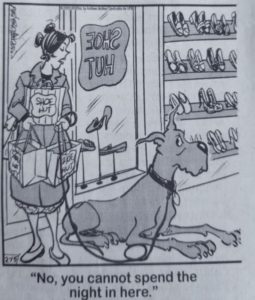
|
| “The family was living in the country when in 1861 Mary [Cassatt] began going in to the Pennsylvania Academy of the Fine Arts. Her father too went in to his Philadelphia office, and it is easy to visualize them standing together on a country platform, in the high, fresh, early morning air, waiting for the train.
“The father wears a high-standing collar that props up the chin to his insufficiently-backed head; the bulky collar of his coat comes up around it.
“His daughter, hair drawn high in the mode of the time, a fringe (as they used to call bangs) under her hat, wears long, flowing skirts. Women’s dresses required more than one petticoat to hold them into the desired bell shape (an open bell in those days: only later did bustles alter the shape to a dinner bell’s). Dresses themselves were stiffened with crinoline—no longer a crinoline, but the material crinoline, or else buckram, lined the skirts, with, at the bottom, a dust ruffle. For a great lady, the ultimate in elegance was to cross a street without feeling the necessity of lifting her skirt, in sublime disregard of dirt.”
Nancy Hale – Mary Cassatt
|
| “the Prince never chose his clothes himself. Ties, suits, shirts were always picked out ev3ry morning with cuff links pre-inserted and offered him like a choice of hors d’oeuvres b his faithful valet Stephen Barry. At Buckingham Palace, Windsor, or Sandringham his valet opened his curtains in the morning and ran his bath. An orderly from the Welsh Guards arrived at dawn’s ight to shine his shoes. Even the Prince’s toothbrush was prepared with pre-squeeed Macleans. According to Paul Burrell, ‘A silver key bearing his feathers was attached to the end of a toothpaste tube like a sardine-tin key and turned to squeeze enough to fit on the right.’ Burrell also revealed the unedifying detail that Michael Fawcett, later promoted to the honored post, even held Charles’s specimen bottle when a sample was required.
“Diana mocked Charles’s dependence on his valet . . . . ‘Once I was in his dressing room and the valet would put out his clothes, always giving him a choice of three shirts. I asked him which shirt he was going to wear and he told me he didn’t like any of them. Across the room, there were open racks and racks of endless shirts and all he needed to do was get up and choose one, but instead he pressed the button and the valet would have to get more from the rack. So I said to him, “Why don’t you cross the room and choose them yourself so the valet can get on with all the other things he needs to do.” But Charles just shouted, “He’s paid to do it.”‘”
Tina Brown – The Diana Chronicles
|

Comments are closed.
|
|



